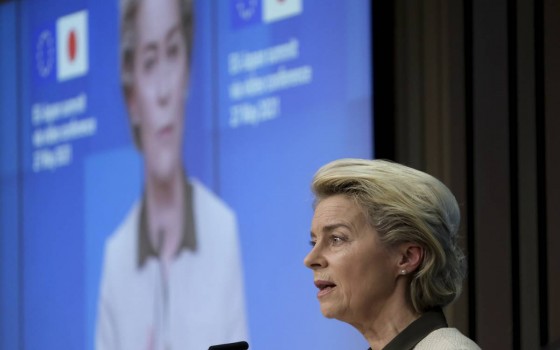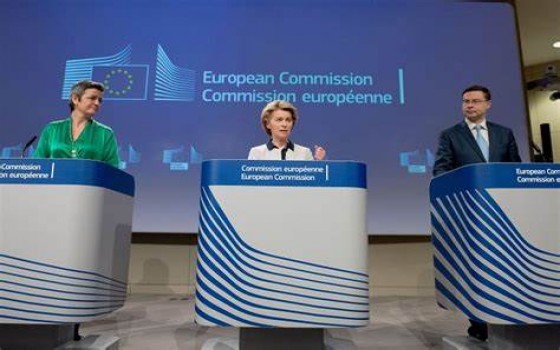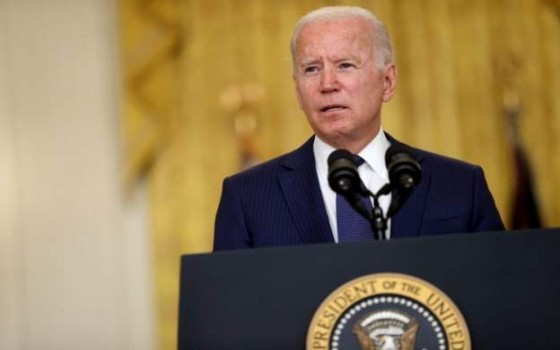
New rules to reform the European Union's economic management framework

- Europe and Arabs
- Saturday , 10 February 2024 11:40 AM GMT
Brussels: Europe and the Arabs
Negotiators of the Council of Member States of the European Union and the European Parliament have reached an interim political agreement on the proposed reform of the European Union's economic governance framework. According to a statement issued in Brussels after the conclusion of negotiations between the two sides early this morning, “The main goal of the reform is to ensure sound and sustainable public finances, while promoting sustainable and comprehensive growth in all member states through reforms and investment.” The statement was conveyed by Vincent van Petegem, Belgian Minister of Finance. “The new rules will significantly improve the current framework and ensure effective and applicable rules for all EU countries. It will protect balanced and sustainable public finances, strengthen the focus on structural reforms, and promote investments, growth and job creation across the EU. “I am pleased that we have reached a balanced agreement that will now allow for rapid implementation.”
Main elements of the interim agreement
The Council and Parliament agreed to maintain the overall goal of reform, which is to reduce debt and deficit ratios in a gradual, realistic, sustainable, and growth-friendly manner, while protecting reforms and investment in strategic areas such as digital, green, social, or defense fields. At the same time, the new framework will provide appropriate scope for countercyclical policies and addressing macroeconomic imbalances.
The agreement also maintains the commitment of member states to submit medium-term national financial structural plans.
The Commission will offer a “reference path” (formerly called the “technical path”) to Member States where government debt exceeds 60% of GDP or where the government deficit exceeds 3% of GDP. The interim agreement provides for an optional and realistic prior dialogue between Member States and the Commission in advance.
The Reference Path indicates how Member States can ensure that, by the end of the four-year fiscal adjustment period, government debt is on a reasonably downward path or remains at prudent levels over the medium term.
The Interim Agreement contains two guarantees that the reference path must adhere to, namely a debt sustainability guarantee, to ensure low debt levels and a deficit flexibility guarantee, to provide a margin of safety below the treaty deficit reference value of 3% of GDP, in order to create fiscal margins. .
Based on the reference path, Member States then incorporate the fiscal adjustment path, expressed as net expenditure paths, into their medium-term national fiscal structural plans. The plans, including net spending pathways, therefore need council approval. The agreement stipulates that the control account will record deviations from each country's net expenditure paths.
The new rules will encourage structural reforms and public investments for sustainability and growth. Member States will be allowed to request an extension of the four-year fiscal adjustment period to a maximum of seven years, if they implement certain reforms and investments that improve resilience and growth potential, support fiscal sustainability and address common EU priorities. This includes achieving a just, green and digital transition, ensuring energy security, enhancing social and economic resilience, and building defense capabilities where necessary.
Next steps
The interim political agreement on the preventive arm of the economic governance framework is subject to approval by the Council in the Permanent Representatives Committee and the Parliament's Economic Affairs Committee before a formal vote in both the Council and Parliament. Once adopted, the text will be published in the Official Journal of the European Union and enter into force the next day.
A European statement in Brussels said that the regulations for the corrective arm and the directive on the requirements of the budget frameworks of member states only require consultation with the European Parliament.
The goal is to have it approved by the Council at the same time as a preventive arm.
Economic management has been a fundamental pillar of the structure of the Economic and Monetary Union, since 1992, with the aim of preventing and correcting macroeconomic imbalances that could weaken national economies and affect other EU countries through cross-border spillover effects.
The EU economy faces renewed challenges as it recovers from the COVID-19 pandemic and the consequences of Russia's aggressive war on Ukraine. Against the backdrop of rising debt levels, interest rates and new common investment and reform targets, the EU is working on reforming the Stability and Growth Pact and how the effectiveness of the Pact can be improved.
On 26 April 2023, the Commission presented a package of three legislative proposals: two regulations aiming to replace (preventive arm) or modify (corrective arm) the pillars of the Stability and Growth Pact first adopted in 1997, and a revised Directive on requirements. Budget frameworks of member states.
On 21 December 2023, the Council formally agreed to start negotiations with the European Parliament












No Comments Found